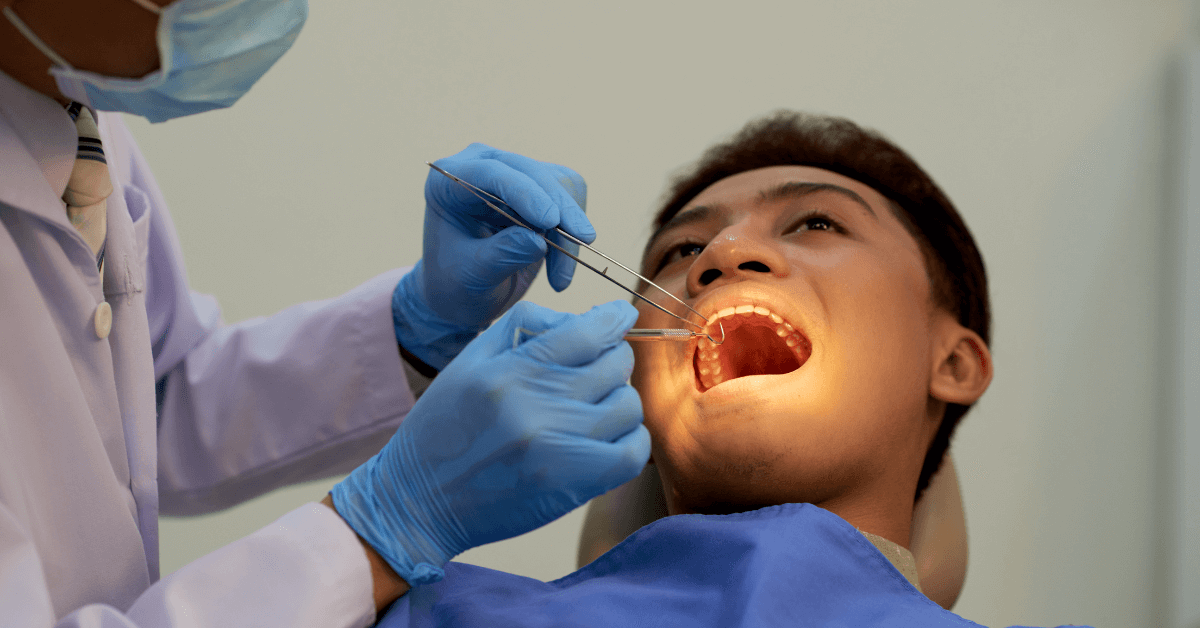
Tooth Extraction: What You Need to Know
Tooth extraction happens to be one of the most common dental procedures, yet many people still feel uncertain about it. In reality, extractions are carried out for a range of reasons, including decay, gum disease, injury, and overcrowding. Understanding the process and the steps involved before and after treatment can help ensure a smoother recovery and reduce anxiety.
This guide provides clear tooth extraction information on what happens during the procedure and how to care for your mouth after it is complete. Let’s get started!
What Is Tooth Extraction?
Tooth extraction refers to the removal of a tooth from its socket in the jawbone. Dentists try their very best to preserve natural teeth whenever possible through treatments like fillings, crowns, or root canal therapy. Extraction becomes necessary when:
- A tooth is severely decayed or infected
- Advanced gum disease has compromised the supporting tissues
- Wisdom teeth are impacted or painful
- Teeth are fractured beyond repair
- Crowding needs to be resolved for orthodontic treatment
Modern dentistry has significantly improved the safety and comfort of this procedure. With advanced techniques and precise equipment, extractions today are generally efficient and cause minimal discomfort.
What Happens During Tooth Extraction?
A tooth extraction can be categorised as either non-surgical or surgical. The nature depends on the condition of the tooth and its position.
Non-Surgical Extraction
This approach is used when the tooth is visible above the gum line. After numbing the area with a local anaesthetic, the dentist loosens the tooth using specialised instruments and then removes it with dental forceps. This procedure is usually quick and straightforward.
Surgical Extraction
When a tooth is broken, impacted, or still beneath the gum line, surgical extraction is required. The dentist may make a small incision in the gum and sometimes remove a portion of the surrounding bone to access the tooth. Precision tools can be used to remove the tooth carefully while limiting damage to nearby tissues. This helps promote faster recovery.
What to Know Before Getting a Tooth Extraction?
Preparation is the most important part of ensuring a safe and smooth procedure. Patients should be well-informed about what to expect.
Discuss Your Medical History
Conditions like diabetes, heart disease, or blood-clotting issues should always be disclosed to your dentist. Likewise, mention any medications you take, including blood thinners, as they can affect healing and increase risks during the procedure.
Anaesthetic and Sedation Options
Most extractions are carried out using a local anaesthetic. However, if you are particularly anxious or the extraction is complex, sedation or general anaesthesia may be recommended. Discuss the most suitable option for your case with your dentist.
Pre-Procedure Instructions
If sedation is planned, you may need to avoid food and drink for several hours before treatment. Arrange transport home, as you may not be able to drive. Wear comfortable clothing and carefully follow all instructions provided by your dentist.
Key Questions to Ask Your Dentist
- How long will recovery take?
- What type of pain relief will I need?
- Are there alternatives to extraction in my situation?
Being informed helps you prepare mentally and physically, leading to better outcomes.
The Extraction Procedure Step by Step
While the specifics vary depending on the tooth and its condition, the process generally includes:
- Examination and Imaging: X-rays are taken to assess the tooth and surrounding structures.
- Anaesthetic Application: A local anaesthetic is used to numb the treatment area.
- Tooth Loosening: Special dental instruments are used to gently loosen the tooth.
- Tooth Removal: The dentist removes the tooth using forceps or surgical methods if necessary.
- Site Care: Gauze is applied to help form a blood clot, and stitches may be used in surgical cases.
Aftercare and Recovery
Caring for the extraction site properly is vital to reducing complications such as infection or dry socket.
Stop the Bleeding
Insert a gauze pad between your teeth and bite gently for about 30 to 45 minutes to help form a blood clot. Avoid rinsing or spitting forcefully in the first 24 hours. This can dislodge the clot, which is not ideal.
Manage Pain and Swelling
Take prescribed or over-the-counter pain relief as recommended. Apply an ice pack gently to your cheek for 10 to 15 minutes at a time during the first day to reduce the inflammation.
Keep the Area Clean
Do not brush near the extraction site for the first day. After 24 hours, use warm salt water to gently rinse your mouth several times to keep the area clean.
Adjust Your Diet
Stick to soft foods for the first few days. Avoid spicy, crunchy, or hot foods until healing progresses.
Lifestyle Considerations
Do not use straws or smoke, as suction can interfere with clot formation. Avoid all kinds of strenuous activities for at least 24 to 48 hours.
Healing Timeline
Recovery usually depends on the complexity of the extraction. However, most patients notice a clear improvement within seven days. Surgical extractions may take slightly longer to heal.
Dental Instruments and Extraction Precision
The effectiveness of tooth extraction depends not only on the dentist's skill but also on the quality of the equipment used. Reliable tools such as elevators, forceps, and suturing instruments play an important role in ensuring accurate and minimally invasive treatment. Dentify Dental provides a wide range of dental instruments for sale, designed to help dental professionals perform safe and efficient procedures.
Conclusion
Tooth extraction may sound daunting, but with modern techniques and proper preparation, the procedure is generally safe and effective. Understanding what happens during tooth extraction, knowing how to prepare, and following the right aftercare measures all contribute to a smooth recovery.
For dental professionals, precision tools like elevators for dental extraction ensure the best outcomes for patients. At Dentify Dental, we focus on supplying trusted instruments that support high standards of care. By combining professional expertise with the right tools, both patients and practitioners can feel confident throughout the extraction process.










